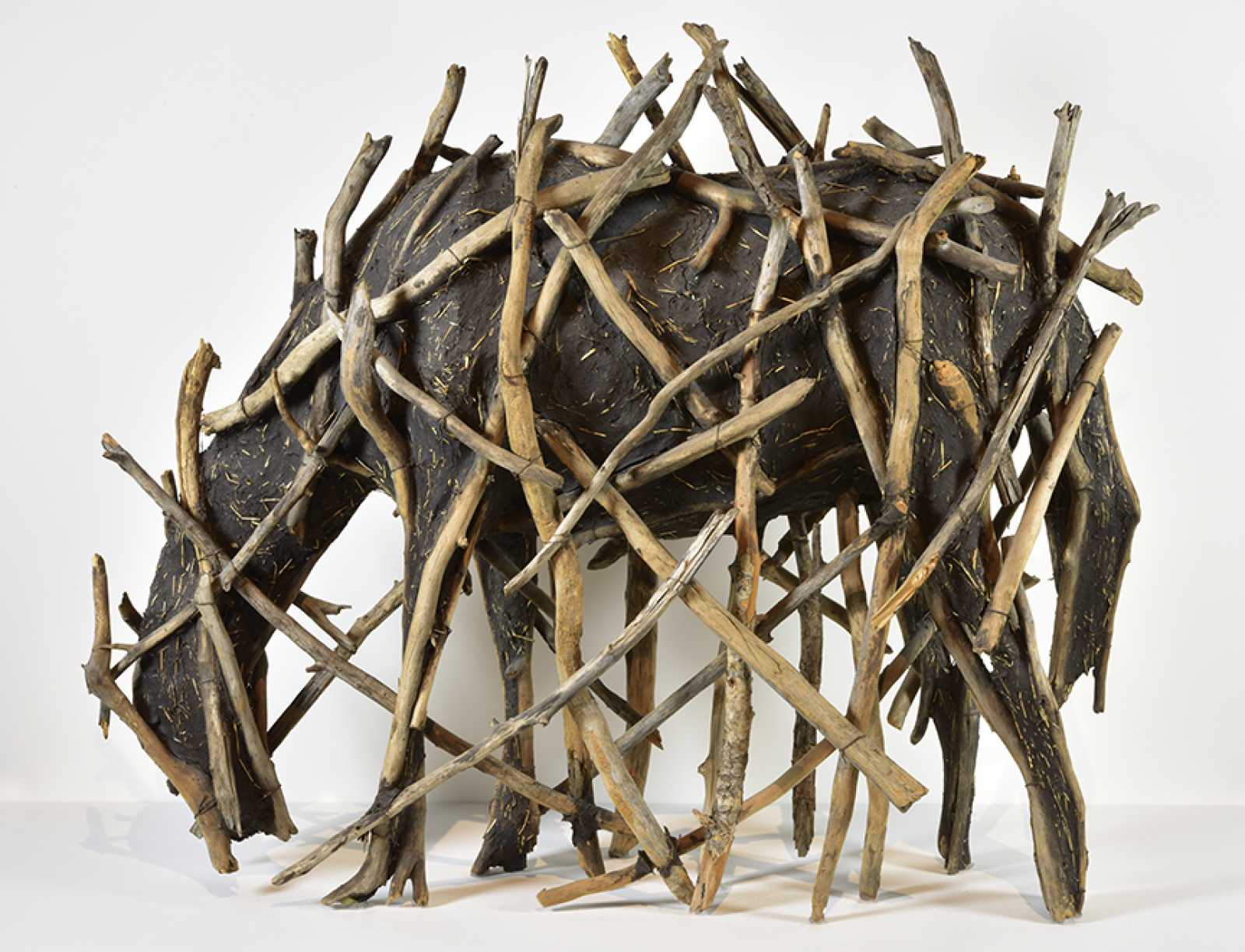Deborah Butterfield
Deborah Butterfield (American, born 1949), Untitled (Horse), 1978, mud, sticks, 29 x 36 x 11 inches. Gift of Steve Chase, 15-1994.
March is Women’s History Month, which honors the contributions of women to American history and life today. The achievements of women in all fields, including women artists, have often been less visible and treated unequally. As we celebrate women throughout March, we reflect on the past so that we can examine the path forward. Palm Springs Art Museum honors Women’s History Month by sharing an activity inspired by the work of Deborah Butterfield.
Mix your own clay using at home ingredients to learn about sculpture while creating an object inspired by a favorite animal or creature.
Sculpture is a three-dimensional (3-D) form that takes up physical space. The three dimensions are length, width and depth; and the form can be structured, such as squares and cubes, or organic and free-flowing.
This activity uses baking ingredients and a hot stove, so parent supervision should be required for young artists.
Learn more about Deborah Butterfield
Supplies:
- Makes about two pounds, but the recipe can be halved:
- 2 cups baking soda
- 1 cup cornstarch
- 1 ¼ cups cold water
- Nonstick pot
- Spoon or whisk
- Large bowl
- Damp towel
- Optional: Paint and found nature materials such as sticks, flowers, or sand
Step 1
Measure the baking soda, cornstarch and water, and then place them in a non-stick pot.
Step 2
Stir the ingredients together until they are smooth.
Step 3
Set the pot over medium heat and stir until the ingredients start to boil. Smooth out any lumps and continue to cook until it becomes a thick consistency like mashed potatoes.
Use your spoon to carefully transfer the hot mixture into a large bowl. Place a damp towel over the top to preserve moisture.
While your clay is cooling, think about the animal, creature or form you want to create with your clay. Deborah Butterfield often creates horses made from natural and found materials such as drift wood. You might take inspiration from the artist and create a sculpture of your favorite animal.
Step 4
Once the clay is cool to the touch, take out a small piece from the bowl and begin shaping your sculpture. Make sure to place the damp towel back over the bowl of clay to keep it moist. Add a little bit of water if the clay starts to dry out.
It helps to work on one section at a time and then put the pieces together to form your final sculpture. For example, you might start with a piece of clay that will form the head and then move onto the body, legs, and tail. Once you have the separate pieces, you can combine them by pressing the ends of the parts together. Use your fingers to carefully smooth the parts together until they are adhered and combine to create the overall form.
Once your sculpture is finished, place it in a safe place to dry overnight.
Step 5
Add color with paint or leave the clay white.
Optional step: If you would like to add elements from nature such as sticks sand, pebbles, or flowers in ways similar to the artist, you can either mix them in your clay while you are sculpting or layer them on the figure once your sculpture is formed.






